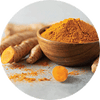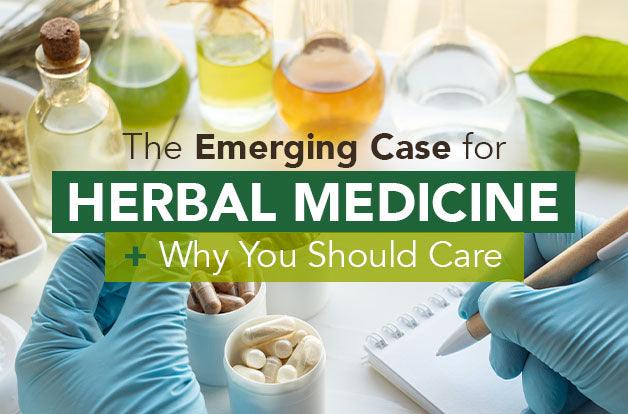If you were to ask someone a thousand years ago why they take passionflower to help ease sleeplessness or ashwagandha to deal with stress, the answer would likely have been, “Because it works.”
That explanation may have sufficed back then, but these days, we require much more background on the underlying mechanisms of any supposed health remedy. Fortunately, modern herbalists have a wealth of science and information at their fingertips. And when that scientific insight is combined with the knowledge and wisdom of our ancestors’ time-tested herbal toolkit, it’s possible to get a much clearer picture of how herbs work — and which ones might most benefit you.
Keep reading to understand the true power of herbs better, the key differences between herbs and prescription drugs, and why all of this truly matters when it comes to achieving your best health.
When Ancient and Modern Wisdom Collide
Ancient herbalists didn’t have the benefit of medical technology to examine a plant’s impact on human cells under a microscope or the scientific method to compare an herb’s efficacy to a placebo. Instead, they relied on what they did have: An intimate relationship with nature, a keen sense of observation, and rich traditions passed down from generation to generation.

“There’s other information outside of the scientific method that’s valuable, and in this case, it’s observation,” explains Dr. Bill Rawls, Medical Director of Vital Plan. “People have been using herbs for thousands of years, observing which ones have an effect, and writing down and passing along that information. Pharmaceuticals don’t have that important history; vitamins and minerals don’t either.”
Today, modern herbalists have the advantage of both hindsight and science, and the research on herbs’ restorative powers is growing rapidly. Search “herbal medicine” on PubMed, a biomedical literature database, and you’ll get nearly 60,000 results.
Much of this research reveals valuable, how-it-works intel about different herbs. For instance, a study on andrographis, an herb native to India, found that it helped inhibit the release of pro-inflammatory cytokines, suggesting it could make for an effective anti-inflammatory agent. Another study showed that certain carbohydrates in cordyceps, a mushroom long used in Chinese herbal medicine, help reduce oxidative stress caused by excessive physical activity.
These findings are impressive, yet they hardly scratch the surface of what scientists have discovered thus far about herb and their health-supporting properties.
The Difference Between Drugs and Herbs
Every day, we learn more about the mechanisms behind the benefits of herbs, and there are some key distinctions between drugs and herbs. For example:
“A fundamental difference between drugs and herbs is that drugs are single chemicals, whereas herbs are a complex mix of phytochemicals, biochemical substances produced by the plants to protect against cellular stress factors,” says Dr. Rawls. “So when you’re studying drugs, you’re studying one thing; with herbs, you’re looking at numerous compounds working together in synergy, and that makes it hard to isolate what’s doing what.”

The complex nature of herbs helps explain why the Food and Administration (FDA) doesn’t regulate their safety and efficacy. “They simply don’t have the funding or bandwidth,” says Dr. Rawls. “Plus, we find the chemicals in certain everyday herbs complementary to our physiology. Probably the best evidence is that so many herbs enhance liver function, whereas most drugs on the market challenge liver function,” says Dr. Rawls.
Case in point: Prescription drugs have historically been a leading cause of death in this country, according to findings in JAMA, whereas the number of herbal disasters you hear about is almost nonexistent, despite nearly one in five Americans taking them, notes Dr. Rawls.
Still, He points out that both the FDA and Federal Trade Commission (FTC) regulate herbal supplements to ensure that you, the consumer, get what you pay for. “They make sure supplements don’t make false claims about their benefits, and that the ingredients advertised on the supplement labelare actually in there — there’s huge value in that.”
Why Do Herbs and Humans Get Along So Well?
Dr. Rawls says there’s a chemical balance between plants and people that have likely been there since day one.
“We’ve co-evolved to survive the same environmental stressors,” he explains. “Plants create various phytochemicals to remain healthy and strong: phytoestrogens or plant hormones to help them grow; antioxidants to help prevent cell damage and aging; antimicrobials to defend against disease-causing microbes. And humans have been eating those plants for millennia and gaining some benefits of the phytochemicals as they circulate through our bloodstream and tissues.”
Unfortunately, today's human diet largely lacks vegetables, herbs, and powerhouse phytochemicals.
Thanks to the industrial revolution and modern farming techniques, we’ve switched to a diet based on grain and seeds, and these plants are bred for quantity, size, and caloric density — not nutritional value — so they’re nutrient-deficient and overloaded with carbohydrates. We also feed our livestock seeds, soy, and corn, diminishing the phytochemicals that used to transfer to us when we consumed meat.
“All of this — the lack of nutrients and reliance on grain-based foods — really points to the necessity of supplementing our diets with herbs to ensure we get those essential phytochemicals our body needs,” says Dr. Rawls.
Dr. Rawls’ Top Everyday Herbs to Promote Cellular Health

Turmeric
A vibrant, yellow-orange spice used in India, China, and Southeast Asia for thousands of years, turmeric contains abundant beneficial health properties. It supports the liver and nerves and offers potent antioxidant and anti-inflammatory qualities, to name a few.

Rhodiola
Considered an adaptogen, rhodiola helps the body adapt to stress, improves stamina and energy levels, promotes cognitive functioning, and supports memory, learning, and attention.

Reishi Mushroom
A medicinal mushroom, reishi is an immunomodulator, meaning it facilitates a healthy immune response and contains adaptogenic properties to aid in handling stress.

Gotu kola
Known as a brain and nervous system tonic, gotu kola revitalizes the brain, fosters a healthy mood, bolsters cellular health, and offers immune and antioxidant support.

Shilajit
Not technically an herb, shilajit is a compact, gummy matrix of herbs, mosses, fungi, and other earthly matter, and it must be processed and purified before use. It boasts a range of benefits, such as fostering immune and reproductive health, increasing endurance and resistance to stress, and improving gut health.

Milk thistle
Native to southern Europe and North Africa, milk thistle contains antioxidants that support liver health and bile flow and assist in maintaining adequate glutathione levels in the liver cells.
The first five herbs in the list above can be found in Dr. Rawls’ Daily Herbal formulation, designed to promote all-around health and longevity. Milk Thistle can be found in Vital Plan’s Daily Multi-Plus, a formulation designed to support cellular function, optimize energy production, and healthy detoxification.
If you want both products and all the benefits that come with them (and, of course, you do!), we recommend Dr. Rawls’ Daily Vitality Kit - the ultimate solution for total wellness and better years.

The Bottom Line On Herbal Medicine
Although herbs can help replace the missing nutrients and protective phytochemicals from your day-to-day health regimen, it’s important to remember that they’re just part of the equation for achieving wellness.
“Herbs should be used in tandem with lifestyle changes to reduce stress, minimize exposure to toxins, increase movement, and prioritize sleep,” says Dr. Rawls. “It’s only when you combine these elements that you see the most profound health benefits.”
If you’re ready to switch from symptom-treating medicines to reaching root causes and whole-body wellness through herbal supplements, we encourage you to take our Vital Planner Quiz. In just 2-3 minutes, you’ll get personalized recommendations to help you find long-lasting health.
References
1. Feng Yan, Beibei Wang, Yan Zhang. Polysaccharides from
2. Lazarou J, Pomeranz BH, Corey PN. Incidence of adverse drug reactions in hospitalized patients: a meta-analysis of prospective studies. JAMA. 1998 Apr 15;279(15):1200-5. doi: 10.1001/jama.279.15.1200
3. Peregoy JA, Clarke TC, Jones LI, Stussman BJ, Nahin RL. Regional variation in use of complementary health approaches by U.S. adults. NCHS Data Brief. 2014;(146):1-8.
4. Salim E, Kumolosasi E, Jantan I. Inhibitory effect of selected medicinal plants on the release of pro-inflammatory cytokines in lipopolysaccharide-stimulated human peripheral blood mononuclear cells. J Nat Med. 2014 Jul;68(3):647-53. doi: 10.1007/s11418-014-0841-0



